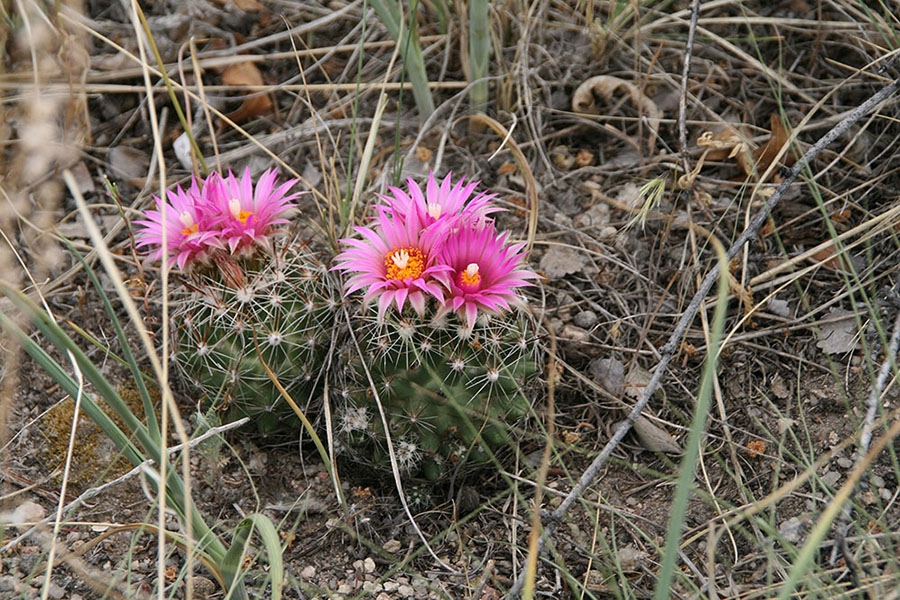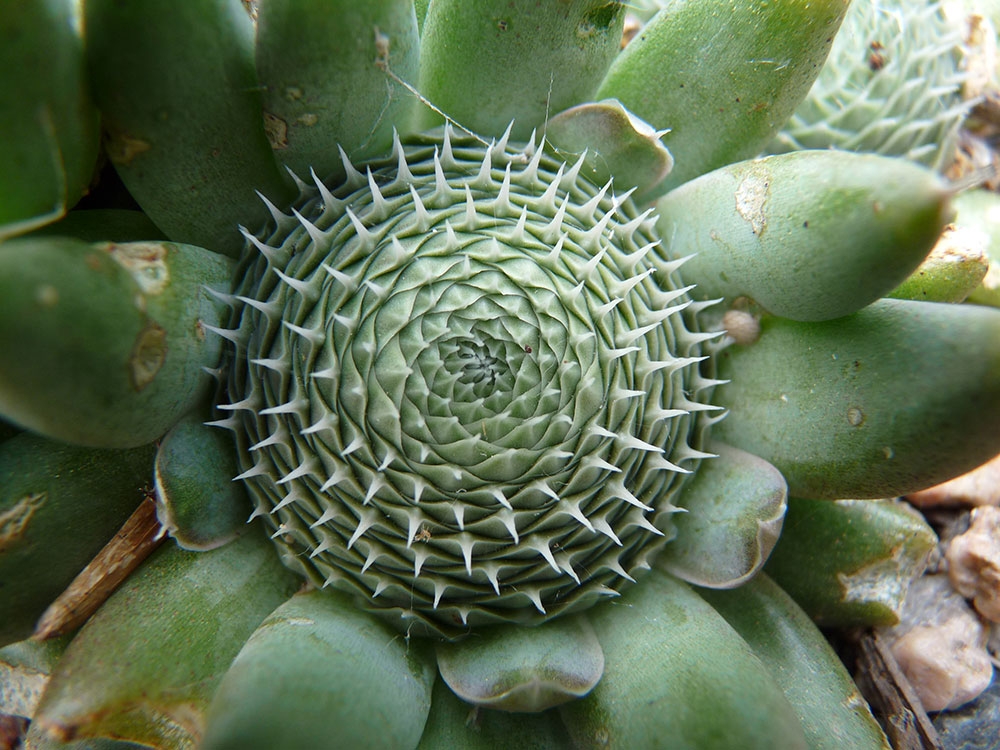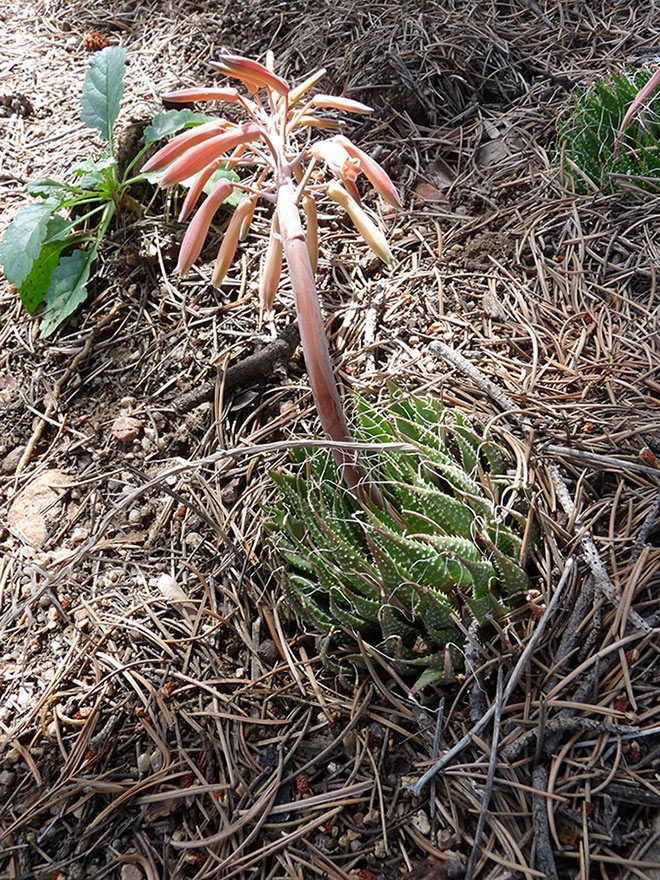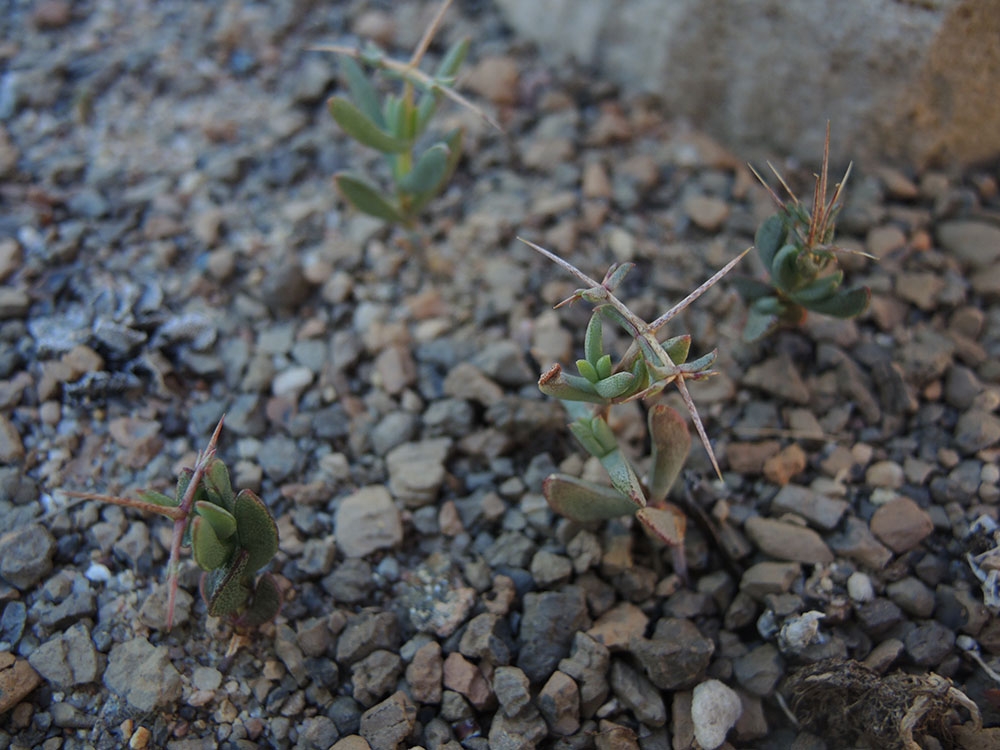September Walking Tour – Noticing the Succulents of the Steppe Garden
September 2, 2021
Kevin Williams
, Manager of Horticulture
Succulents are incredible creatures. Their fleshy, spheroidal, animalistic forms reach to us. They are hairy, waxy, spiny, thick, weird and familiar. The same adaptations that make them champion survivors also attract us. These creature features break our tendency toward plant blindness through a dimensionality and existence in space that we understand. We judge them as separate from their floral brethren and honor them as other beings.
Plants with succulent adaptations occur in every climate and bioregion on earth, and steppe regions are no exception. The Steppe Garden is particularly rich in succulent life forms, and they’re easy to spot and commune with if you know how to notice them.
- Begin your exploration by walking through the Shady Lane entrance on the northern side of the Steppe Garden and veer to the left. These crescent moon-shaped beds are part of our South African steppe collections. Take the gravel path and look down. You’ll notice a huge variety of different Delosperma, including my personal favorite, Delosperma obtusum, called the dwarf purple ice plant because of its purple flowers, but also because of the dark purple tint of its leaves in winter. Circle around the bed to get a clear view of our South African succulent outcropping, an entire bed dedicated to displaying the diversity of cold-hardy succulents from that region. See if you can spot our two cold-hardy aloes, Aloe aristata, which forms a tight rosette of dark green leaves, and Aloe striatula, which dies to the ground every year, only to shoot up new leaves with the warmth of spring.
- In the next bed to the south, notice the spiny Ruschia intricata, a small, almost shrubby succulent that creates huge thickets in the South African Karoo. Continue walking toward the Science Pyramid and look in the direction of the canal. There are several succulents that are very important to the North American steppe in this section; the ball cactus Escobaria vivipara, the banana-leaved yucca, Yucca baccata, and the Colorado state cactus, Echinocereus triglochidiatus.
- Now, walk across the bridge to Patagonia. Just through the entrance, on the southwestern face of the large stone formation, notice a pot full of different species of cacti that occur in the Patagonian steppe but aren’t cold-hardy enough for us to grow outside. Just behind that pot, you can inspect a crevice garden built for several species of Patagonian cacti, notably Gymnocalycium gibbosum and several different species of Austrocactus.
- After leaving Patagonia, return to the center of the Steppe Garden. If you choose to, climb the turf-covered berm and look to the north. You should have a perfect view of the planting bed surrounding the amphitheater and a dozen different candy-colored Delosperma cultivars spilling around the concrete bench. Otherwise, retrace your steps and find your way to the central planters. Peek between the cracks in the stones and you might see Orostachys spinosa, a succulent from Middle Asia whose structure almost resembles a spiny green sunflower.
- Approach the final planter, known as the living stones bed, and prepare yourself for a succulent explosion. Surrounding the planting bed is a collection of pots filled with South African succulent specimens that have to be brought into our greenhouses during the winter. The planting bed itself is full of succulents in the plant family Aizoaceae. These plants, commonly known as living stones and perhaps most famously represented by the genus Lithops, have adaptations of color and form that help them avoid predation by blending into their surroundings. There are several dozen species of living stones in this bed, so be sure to slow down and really explore the space. Look around, through and under the grasses for hiding succulents. Calm your mind and attune your eyes.
Categories
Gallery

The ball cactus Escobaria vivipara

Living stones, Lithops salicola

Orostachys spinosa

Aloe aristata

Ruschia intricata
5
photos
Add new comment